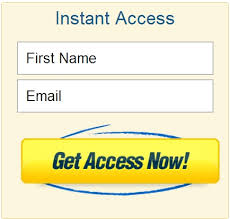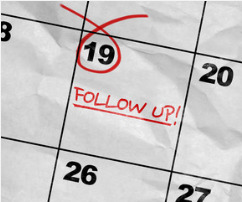Hello there,
Do opt-in funnels make you crazy?
I know sometimes they make me want to cry. I’ve been known to stare blankly at my computer screen for hours just hoping for a breakthrough.
 If they make you crazy if you’re not alone. Did you know that the reason many small business owners say they can’t get their funnels set up is, they simply don’t know what to include where?
If they make you crazy if you’re not alone. Did you know that the reason many small business owners say they can’t get their funnels set up is, they simply don’t know what to include where?
That’s what I wanted to share a quick 3-page process you can use to get your funnel set up ASAP.
I've also included two great resources that can help you get great results at the end 😉
- Optin Page

This is the first page your prospect will see. You might call it a landing page, or a squeeze page. It serves ONE purpose, to get the reader to give you their email address.
Everything that follows depends on this page, so you want to be sure you:
- Include a clear call to action like “Click here to download this free report”.
- Eliminate distractions. Don’t give them anything else to do except opt-in or close the page. This means no external links.
- Address the readers’ pain and offer them solutions. (a free report, training,
checklist etc.)
- Confirmation Page
I like to think of it as a holding page, while you wait for them to confirm their email address. Use it to let them know to check their email and click the link inside to confirm, so they can receive your gift.
This page has great power so don’t want to waste it! In fact, many marketers refer to it as a tripwire page. It’s where you can offer a low-priced entry level product. The idea is to qualify your new subscribers as buyers as quickly as possible. Because we all want more buyers, right?
- Thank You Page
This is where they access what they  joined your list to get. Depending on what that is, provide them with clear and easy instructions for viewing or downloading it.
joined your list to get. Depending on what that is, provide them with clear and easy instructions for viewing or downloading it.
Like the confirmation page, this is valuable real estate, so you want to be sure you use it wisely. In addition to the downloadable item your subscriber opted in for you also want to showcase your other offers especially those at a slightly higher price point.
Here’s why: the person looking at this page is a hot prospect. They’ve proven they are interested what you have to offer. They’re in a buying mood, so be sure to take advantage of that by putting your most relevant offers on this page.
To encourage buying, consider including things like:
 A “crazy” discount or coupon offer that isn’t available anywhere else.
A “crazy” discount or coupon offer that isn’t available anywhere else.
A limited time offer (scarcity sells) if you can legitimately limit sales to a few hours/days or number of units, then this is the place to do it.
Extra bonuses—give them access to additional products/services if they buy through your link on that page.
Remember insider’s deals are motivating. These should be offers that aren’t advertised on the public sales page for that product.
Putting together a sales funnel isn’t complicated or at least it doesn’t have to be. As your business grows and you have more products to offer, you can expand your funnel to include more up-sells and down sells, but for now, this simple setup is really all you need.
Two excellent resources for you:
As promised I have two great resources for you that will help you get your funnel set up quickly.
- Funnels 101 http://lisamcope.com/funnels101
- Free Funnel Design Workbook http://lisamcope.com/funnel-workbook
Last tip: As you plan your funnel, start with the goal (what you're trying to sell) and work backwards to create your tripwire and your opt-in offer. This helps make the process much easier.
You want every step of the funnel makes sense in relation to the previous step and that everything you’re doing is leading people towards your main goal, which is to buy what you have to offer.
I know it's a lot and it can get very confusing, so let me know if you need help. I'm here 🙂
If you like this post please comment, share and fill out the short form on this page to subscribe to my list so I can send you even more tips, information and blog updates that will help you grow your business online!
Thank you for reading,




 Better yet, consider having your readers fill out a simple little survey. It’s quick and easy to do with Google forms or Survey Monkey. When you ask the right type of questions you'll get some great insight into what your readers really want and what they are willing to pay for. Giving them a way to interact with you will also contribute to the relationship.
Better yet, consider having your readers fill out a simple little survey. It’s quick and easy to do with Google forms or Survey Monkey. When you ask the right type of questions you'll get some great insight into what your readers really want and what they are willing to pay for. Giving them a way to interact with you will also contribute to the relationship.

 your subscribers by emailing more often?
your subscribers by emailing more often? If you feel the need to mail more often then find a good reason. Explain to your readers why you’re mailing them daily. For example, if you usually publish a weekly newsletter with the occasional promotional email in between, running a 15 or 30 day challenge for your readers is a great excuse to hit their inbox daily without seeming pushy or making them feel like you're spammer.
If you feel the need to mail more often then find a good reason. Explain to your readers why you’re mailing them daily. For example, if you usually publish a weekly newsletter with the occasional promotional email in between, running a 15 or 30 day challenge for your readers is a great excuse to hit their inbox daily without seeming pushy or making them feel like you're spammer.
